Open Vascular Surgery
Sydney Vascular Surgeon - Dr Mayo Theivendran
What is open vascular surgery?
A tried and tested approach for repairing blood vessels
Open vascular surgery is an approach that involves making a traditional surgical incision to access and repair blood vessels.
Open vascular surgery is typically used when less invasive techniques, such as endovascular procedures, are not suitable. Open vascular surgery is performed on various blood vessels throughout the body to address conditions like aneurysms and blockages.
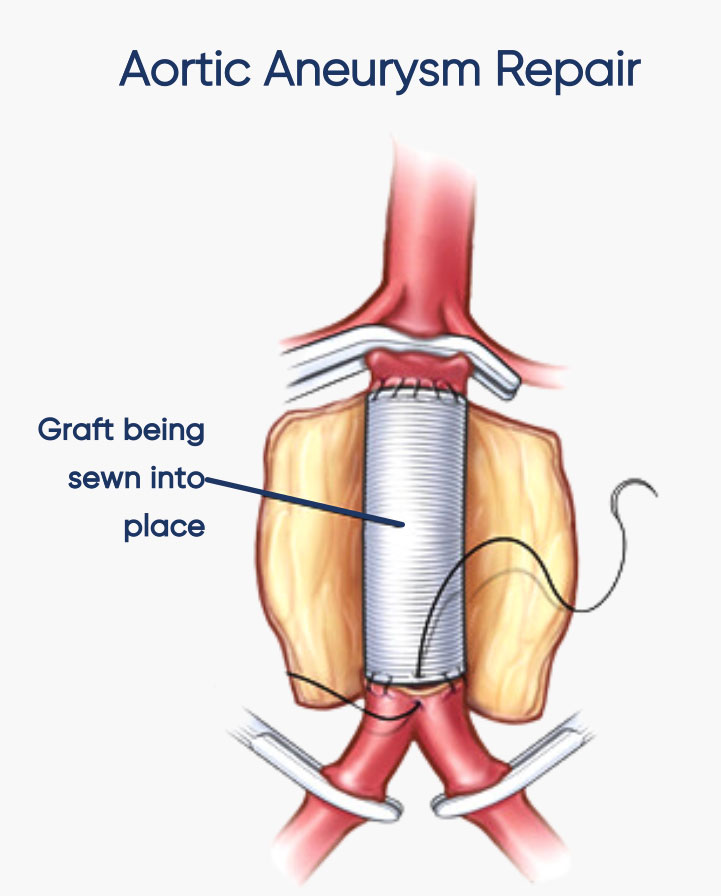
What procedures are performed using open techniques?
Although Dr Theivendran uses minimally invasive (endovascular) techniques for treating vascular problems where possible, there are situations where open surgery is the more effective, preferred, or the only option available. They include:
Open abdominal surgery for aortic aneurysm repair
Dr Theivendran makes an incision in the abdomen and mobilises the organs to access and repair an abdominal aortic aneurysm.
Open thoraco-abdominal aortic aneurysm repair
This procedure treats aortic aneurysms that extend all the way from the chest to the abdomen. Dr Theivendran makes a large incision enabling access to the weakened aortic segment. The aneurysm is replaced with a synthetic graft, reinforcing the aorta and preventing the risk of rupture.
Hybrid thoraco-abdominal aortic aneurysm repair
This procedure treats aortic aneurysms affecting both the thoracic and abdominal portions using a combination of open and endovascular techniques. First, stents are inserted through small incisions, reinforcing the weakened aorta segment. Then, open surgery is performed to replace the remaining diseased aorta with a synthetic graft and supply blood to the organs with a bypass graft. This hybrid approach reduces the invasiveness of traditional open surgery.
Open carotid endarterectomy
The build-up of plaque in your carotid artery may restrict blood flow to your brain. Removing the plaque can improve blood flow in your carotid artery and reduce your risk of stroke.
Open peripheral arterial bypass graft
When blood flow to the legs or arms is reduced as a result of peripheral arterial disease, Dr Theivendran surgically attaches a graft taken from a healthy vein to bypass a blocked or narrowed artery.
Open femoral endarterectomy
This procedure involves removing plaque build-up from the femoral artery in the thigh to restore blood flow.
Open aortobifemoral bypass
This surgery is used to bypass diseased large blood vessels in the abdomen and groin. Blood is redirected through a graft made of synthetic material which is sewn to the existing artery.
Open thrombo-embolectomy
This procedure is performed to remove blood clots (emboli) from a blood vessel.
Open popliteal aneurysm repair
The popliteal artery sits behind the knee. Dr Theivendran can repair an aneurysm in this artery by removing it an replacing it with a bypass graft.
Open visceral artery aneurysm repair
Surgical intervention is necessary for aneurysms in arteries supplying organs like the liver, spleen, or kidneys.
Open surgery for vascular trauma
Open vascular surgery can address traumatic injuries to blood vessels, such as repair or reconstruction after an accident.
Open varicose vein surgery
Open vascular vein surgery may be required when treating recurrent varicose veins or when they are not suitable for endovascular repair.
Preparing for open vascular surgery
Before open vascular surgery, you will receive a comprehensive pre-operative assessment. At this appointment, Dr Theivendran will explain the procedure, the potential risks, and the expected benefits. You may need to stop certain medications or adjust your diet in preparation.
It's essential to provide a complete medical history, including any allergies and a list of your current medications.
Quitting smoking is strongly recommended before vascular surgery.

Anaesthesia for open vascular surgery
Most open vascular surgeries are performed under general anaesthesia, meaning you will be asleep and pain-free during the procedure. Your anaesthetist will monitor you throughout the surgery to ensure your safety and comfort.
Fasting before general anaesthesia
Before general anaesthesia you need to fast to decrease the risk of vomiting during the procedure. You can eat solid food up to six hours prior to anaesthesia and clear fluids up to two hours prior to anaesthesia. You can take prescribed medications with a sip of water at any time.
What happens during the procedure?

Anaesthesia
Depending on the complexity of the procedure, you may be given local anesthesia or be completely asleep under general anesthesia.
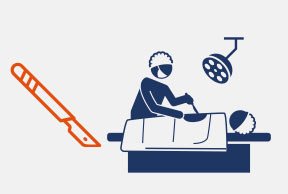
Incision
A surgical incision will be made over the affected area, allowing the surgeon access to the blood vessels.

Vascular Repair
The surgeon will perform the necessary repairs, which may include bypass grafting, patching, or removal of plaque.
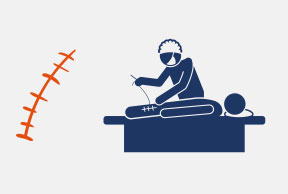
Closure
After completing the repairs, the incision will be closed with sutures or staples.
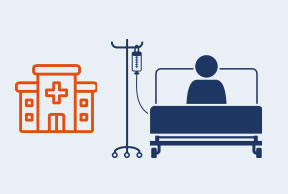
Your hospital stay
The length of your hospital stay will depend on the type of surgery and how your recovery goes.
Immediately after the surgery you will be taken to the recovery ward. You will be closely monitored to ensure your vital signs are stable, the surgical site is secure, blood flow is restored, and there are no immediate complications.
Once your condition has stabilised, you will be moved to the intensive care unit or a general ward.
Same day surgery
If you are going home on the same day as your surgery, and you’ve had a general anaesthetic, you’ll need to have someone pick you up from the hospital.
Do not drive, make important decisions or use machinery for 24 hours after your procedure.
Aftercare following open vascular surgery
Dr Theivendran’s team will provide instructions on at-home wound care, activity restrictions, and medication management.
It's crucial to follow these guidelines carefully to facilitate a successful recovery. You will need to schedule a follow-up appointment with Dr Theivendran.
Complications of open vascular surgery
While open vascular surgery is generally safe and effective, there are potential complications, such as bleeding, infection, blood clots, or problems with the graft or repaired vessel.
It’s not possible to generalise about complication rates because there are many different factors involved. In general, the simpler the procedure, the less likely you are to experience a complication. Factors that increase the risk of complications include, older age, smoking, obesity, diabetes, lung, heart or kidney disease.
Sometimes a second surgery or a longer hospital stay may be required to resolve a complication.
3%

Wound infection
<2%

Bleeding
<1%
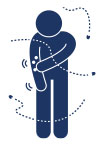
Bleeds / thrombosis of vessels
<1%

Seroma or fluid collection (Self resolves)
<0.5%
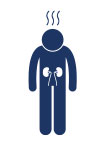
Injury to bowel / bladder / kidney
How Dr Theivendran can help
If vascular disease is affecting your quality of life and non-surgical treatments haven’t worked, ask your treating doctor for a referral to Dr Theivendran an experienced Vascular and Endovascular Surgeon.
He will assess your condition and, if appropriate, discuss surgical options that can improve your vascular health and bring peace of mind.
If you have any questions, please don't hesitate to contact our rooms on (02) 9066 6547
For appointments and enquiries:
Monday - Friday: 8:00am to 4:30pm
Fax: (02) 9182 7533